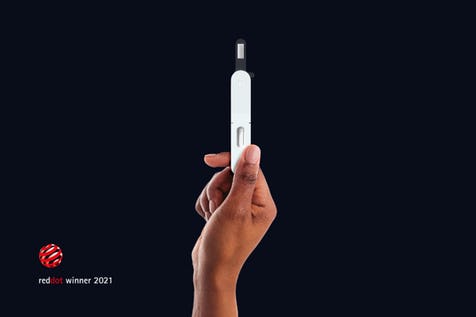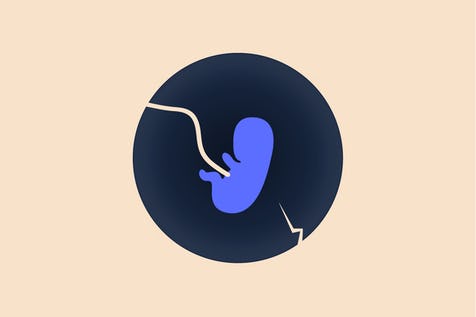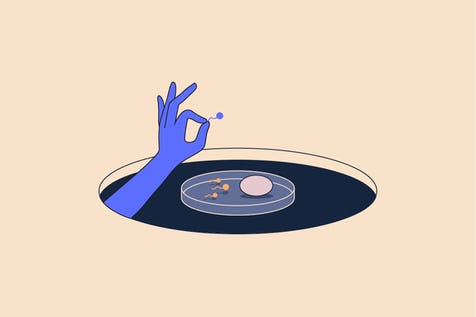Background
As an industrial designer, I have been lucky to work in a wide range of industries and product categories at different levels. From wind turbines with a wingspan of almost 100 meters to intricately tailored consumer experiences “where every interaction and surface reflection counts”. This journey has led me to diverse experiences & nuanced knowledge that few career paths are exposed to - essentially getting to know a little bit of “how everything” works. This is most certainly not to say that I am an expert in these areas. On the contrary - I believe product designers should bring a generalist mindset to the table.
Getting to know the facts of a project and revisiting them briefly yet frequently during the design process is, for me, the key to connecting the dots to make sense of a complex product or system. This is especially necessary in a company like inne, which employs vastly different and highly specialized disciplines. Being sensitive to the needs and requirements of each discipline and how they relate to the end-user is as important to a designer as the ability to give form. In the end that’s the easy part. Connecting the dots and understanding something well enough to translate into a physical product makes about 90% of the design process. Researching, prototyping, sketching, mapping, role-playing, day-dreaming, and mocking up ideas are all applied while soaking in information as each iteration gets you a little further along.
It is my belief that more than the what, designing something primarily starts with understanding the why. And you get better at this through practice and exposure to many different industries and topics, and as you learn to ask questions that are not based on what YOU like, but what all the stakeholders and users need at any given moment and why.
With the exposure to different requirements, functions, and constraints of those many challenging topics and a lifetime of observing, wondering, and a deep desire to understand - I felt I was equipped to take on anything.
And then came inne, a challenge and journey of a lifetime to put this theory into practice!
Diving in.
Two years ago, I jumped headfirst into the early stages of product design & development together with the team at inne. They sought to unveil one of the key sources of the fertility cycle to women - the female sex hormone progesterone. Sounds pretty exciting, right? It is! A new topic, a myriad of new challenges, and a (to me) completely unfamiliar scientific field - biochemistry.
Before talking about the design process, it’s also important to note that the minilab, while a consumer product, is also fully certified as an in vitro diagnostic medical device. This in itself brought several additional requirements into the process which need to be documented and tested with every design decision.
Setting the compass for inne-vation
OK, so we're going to measure hormones? Those little things that everyone has heard of but few actually understand what they are or do? (Full disclosure: after almost three years of exposure to the topic, I still do not entirely understand everything either). Not only are we interested in measuring hormones in saliva, but we want women to do it themselves - intuitively and effortlessly on a daily basis by developing & adopting a routine - the inne moment.
In order to successfully serve our target group with the minilab we constantly ask ourselves - how can biochemistry be made intuitive, effortless, and easily adopted into a daily routine?
Intuitive - the ability to understand something instinctively, without the need for conscious reasoning
Effortless - requiring little to no physical or mental exertion
Routine - a sequence of actions regularly followed
Intuition and effort both define how easily a routine can be developed and maintained. Therefore, we have been very passionate about creating an experience that is easy to understand and a daily routine that requires very little from the user to maintain. Self-discovery is a journey and not a sprint, so we needed to make daily interactions with our hardware simple and delightful to live with every day, and for the long haul.
While developing the inne minilab with these key principles in mind, our team had to break down every function, requirement, and interaction so that components could be arranged along the way to create a seamless experience. It is after all an entirely unique device, establishing an altogether new product category - so every touchpoint and decision deserved a closer look!
The Questions We Asked
How can we create a piece of laboratory equipment which fits into the daily lives of women, everywhere? What should it look like or feel like to use? How do we ensure the correct amount of saliva reaches the strip without creating a mess? How can we design a product which has no immediate reference, yet still conveys a sense of familiarity and affordance to new users? What will our users' partners think of it? How can we make our users feel proud of using inne? What is the overarching form language of a medical device without projecting the clinical experience of products aimed at treating or diagnosing conditions? After all, fertility is not a condition, it’s a part of being human and we required that the experience reflect this radical truth.
On the other hand, there are symptoms and events related to fertility that ARE medical in nature. So at the same time, it’s also a very serious product as it can touch upon so many sensitive aspects of women’s health. These are a tiny portion of the type of questions that guided the design process and form language of the minilab 1.0.
Starting out we only knew two things. A, there was a biochemistry-based test strip for saliva targeting progesterone and B - a reader that would interpret the results of the saliva test on a daily basis.
The strip - prototype, iterate, test, fail, observe. Then try again!
The team at inne had already spent considerable resources developing the core technology of the inne minilab when I joined the team. This is a saliva-based lateral flow test strip that reacts with and captures progesterone in saliva. In itself, it is essentially a thin strip (0.152grams!) in which saliva is transported by capillary action through several cleverly arranged layers so that progesterone can interact with our reagents to give a signal. In this early concept phase, the “strip” was still a naked piece of technology without a vessel that would allow for meaningful interactions or functionality if used by a ‘regular’ user outside of a laboratory setting. For that to happen we needed a cassette!
After going through a large number of ideas, mockups, prototypes, and design iterations (not to mention our science team’s meticulous lab testing at every step), we arrived at a solution that worked and fulfilled the functions and requirements that we had set. While the inne strip looks like a very simple device, it is a lateral flow cassette that has several functions and finely tuned features embedded which were all designed with our unique user experience in mind.
To put the above challenge into context from a design perspective, lateral flow technology has been around for a long time (since the ’70s). It is mainly used by highly trained professionals in a laboratory environment or by laypersons taking binary pregnancy tests. Cassettes are mostly clunky boxes (who cares in a lab?) into which the analyte is often delivered by a precision pipette (too medical and complex for consumers?).
This is all quite a stretch from inne’s early vision of plug-and-play use in the comfort of the home by people who are inexperienced in using laboratory equipment or interpreting scientific data. This is where the power of design, engineering, and biochemistry came together. We needed to design a cassette for laypersons to use reliably, hygienically (what to do with the messy saliva?!), and consistently. The mechanism to collect and deliver saliva to the strip has to be simple to internalize in the muscle memory so that the test could be easily adopted into a daily routine.
Remember our guiding keywords? The ease with which one can form and maintain a routine is a direct function of the effort required and how intuitive it is to do.
The resulting inne strip is:
Effortless to use: 30 seconds in mouth saliva collection. Think of a lollipop!
Intuitive to understand: Open. Fold. Click. Activation is done within seconds (even with your eyes closed!) and audible feedback provides reassurance.
Supportive of a routine: Pop the strip into the reader - inne takes it from there. No buttons, no inputting of results - sit back and tap into radical self-knowledge through the inne app!
The reader - solving a puzzle, piece by piece.
After initially exploring the possibility to co-design a reader with a laboratory equipment manufacturer we quickly realized that if we want to truly rethink the experience surrounding the technology with our target users in mind we would need to develop our own from scratch. Additionally, the internal knowledge that we acquired throughout this process far outweighs the potential shortcut that could have been taken. Few products in the industry have any visual appeal (for consumers) since they are mostly designed for laboratory use where size and weight are not a constraint. In our case, we knew that portability and the ability to travel with the minilab would be important to fit into people’s lives. At the beginning of the process, we had a good idea of the necessary components for imaging, a controlled & calibrated lighting environment, processing, and connectivity. Through prototyping with both digital and physical models, we explored many different form factors and user scenarios to arrange the components in a way that accommodated all of our requirements within an acceptable footprint.
A large part of the challenge in giving form to the minilab was to address the fact that most of our users would have no direct comparison or previous experiences to relate to. Furthermore, we have intentionally worked with a design and brand philosophy that consciously sidesteps the pinkification, baby phone-design type cliches too often associated products intended for women. Instead, we have opted to use a combination of well-proportioned forms in the minilab consisting of a mix of soft surfacing and textures that are approachable, contrasted with sharp elements to convey a sense of quality and reliability. The hard-edged elements, such as the cutout for the strip slot and bottom friction pad, serve to draw attention to the reader’s interaction points and orientation.
Hope, vision & impact
What excites us the most is that we have successfully developed the first version of the world’s first consumer kit, the minilab, which allows women to peek into the world of hormones using only their saliva. The tiny scale and complexity at which biochemical reactions happen in the human body are mind-boggling, so to even get a glimpse into this world is incredible. We are just scratching the surface of this new and exciting combination of technology, design, and biochemistry, and I cannot wait to see where it can take us. There are still so many things we still do not understand about ourselves, and I remain convinced that every step we take in uncovering the beauty and logic of nature will lead to a positive impact on how we live our lives.




